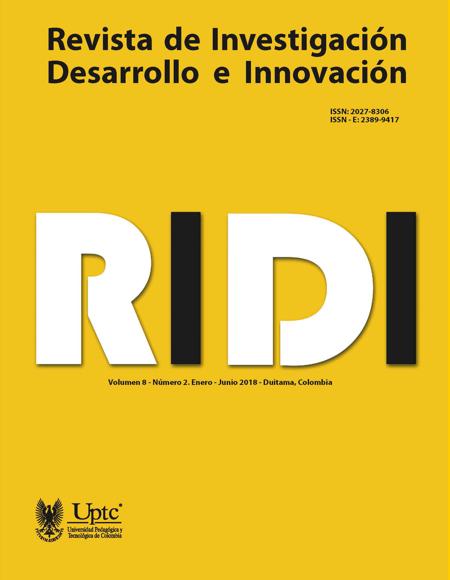Validation of the mathematical model of a solar panel using Matlab/Simulink tool

Abstract
The aim of this work is to perform a statistical analysis and validation of the results obtained from the simulations of a solar panel with Matlab / Simulink tool. To achieve this, a series of measurements of the power generated by the solar panel under different conditions of radiation and operating temperature were made. Later, the behaviour of the solar panel was simulated through the mathematical model and the model established by Simulink. Finally, an analysis of the approximation of each of the simulations with the real data was performed. The obtained results indicate that for the simulation by means of the mathematical model of the solar panel, a coefficient of determination of 0.9889 was obtained, whereas, for the model of the solar panel established by Simulink was 0.8673. The above shows the good correlation of each of the simulations performed with real values, reaching the conclusion that although the two methods used are close enough to reality, the mathematical model of the solar panel has a better approximation.
Keywords
determination coefficient, mathematical model, solar panel, Matlab
Author Biography
Anderson Guillermo Vera-Dávila
Estudiante Ingeniería Electrónica
Jhan Carlos Delgado-Ariza
Estudiante Ingeniería Electrónica
Sergio Basilio Sepúlveda-Mora
Ingeniero electrónico, Magíster en Ingeniería Eléctrica y Computación
References
- Acevedo-Luna, A., & Morales-Acevedo, A. (2018). Study of validity of the single-diode model for solar cells by I–V curves parameters extraction using a simple numerical method. Journal of Materials Science: Materials in Electronics, 1–7. doi: http://doi.org/10.1007/s10854-018-8793-x DOI: https://doi.org/10.1007/s10854-018-8793-x
- Agency, I. I. E. (2016). Tracking Clean Energy Progress 2016. Recuperado de: www.iea.org/etp/tracking for
- Altas, I. H., & Sharaf, A. M. (2007). A Photovoltaic Array Simulation Model for Matlab-Simulink GUI Environment. In International Conference on Clean Electrical Power, 341–345. Capri, Italy: IEEE. DOI: https://doi.org/10.1109/ICCEP.2007.384234
- De Soto, W., Klein, S. A., & Beckman, W. A. (2006). Improvement and validation of a model for photovoltaic array performance. Solar Energy, 80 (1), 78–88. doi: http://doi.org/10.1016/j.solener.2005.06.010 DOI: https://doi.org/10.1016/j.solener.2005.06.010
- González-Longatt, F. (2005). Model of photovoltaic module in Matlab. In Ii Cibelec, (2006), 1–5. Recuperado: http://www.academia.edu/875827/Model_of_Photovoltaic_Module_in_Matlab
- Granda-Gutiérrez, E. E., Orta-Salomón, O. A., Díaz-Guillén, J. C., Jimenez, M. A., Osorio, M., & González, M. A. (2013). Modelado y Simulacion de Celdas y Paneles Solares. Congreso Internacional de Ingeniería Electrónica 2013. 17–22. doi: http://doi.org/10.13140/2.1.4192.8968
- Icaza-Alvarez, D., Calle-Castro, C. J., Córdova-González, F., Lojano-Uguña, A., & Toledo-Toledo, J. F. (2017). Modeling and Simulation of a hybrid system Solar panel and wind turbine in the locality of Molleturo in Ecuador. In 6th International Conference on Renewable Energy Research and Applications (5), 620–625. San Diego: IEEE. doi: http://doi.org/10.1109/DISTRA.2017.8191134 DOI: https://doi.org/10.1109/ICRERA.2017.8191134
- Ideam. (2017). Atlas de Radiación Solar. Recuperado de: http://atlas.ideam.gov.co/basefiles/RadiacionPDF/Cucuta.pdf
- Jimenez, F., & Solé, D. B. (2009). Estudio y simulación de sistemas de conversión fotovoltaica-eléctrica mediante Matlab/Simulink. Saaei’09.
- Kapoor, D., Sodhi, P., & Deb, D. (2012). Solar panel simulation using adaptive control. In International Conference on Control Applications, 1124–1130. Dubrovnik, Croatia. doi: http://doi.org/10.1109/CCA.2012.6402674 DOI: https://doi.org/10.1109/CCA.2012.6402674
- Marín, C. E. (2004). La Energía Solar Fotovoltaica En España. Ninbus, 13–14, 5–31.
- MathWorks. (2017a). Evaluating Goodness of Fit. Recuperado de: https://www.mathworks.com/help/curvefit/evaluating-goodness-of-fit.html
- MathWorks. (2017b). PV Array. Recuperado de: https://www.mathworks.com/help/physmod/sps/powersys/ref/pvarray.html
- Navidi, W. (2006). Estadística para ingenieros y científicos. México: M.-H. Interamericana, Ediciones.
- Nguyen, X. H., & Nguyen, M. P. (2015). Mathematical modeling of photovoltaic cell/module/arrays with tags in Matlab/Simulink. Environmental Systems Research, 4 (1), 24. doi: http://doi.org/10.1186/s40068-015-0047-9 DOI: https://doi.org/10.1186/s40068-015-0047-9
- Reyes-Caballero, F., Fernández-Morales, F., & Duarte, J. (2016). Panorama energético. Revista de Investigación, Desarrollo e Innovación, 7 (1), 151-163. doi:http://dx.doi.org/10.19053/20278306.v7.n1.2016.5605 DOI: https://doi.org/10.19053/20278306.v7.n1.2016.5605
- Rezk, H., & Hasaneen, E. S. (2015). A new MATLAB/Simulink model of triple-junction solar cell and MPPT based on artificial neural networks for photovoltaic energy systems. Ain Shams Engineering Journal, 6 (3), 873–881. doi: http://doi.org/10.1016/j.asej.2015.03.001 DOI: https://doi.org/10.1016/j.asej.2015.03.001
- Salmi, T., Bouzguenda, M., Gastli, A., & Masmoudi, A. (2012). MATLAB / Simulink Based Modelling of Solar Photovoltaic Cell. International Journal of Renewable Energy Research, 2(2), 213–218. doi: http://doi.org/10.1234/IJRER.V2I2.157
- Selmi, T., & Belghouthi, R. (2017). A novel widespread Matlab/Simulink based modeling of InGaN double hetero-junction p-i-n solar cell. International Journal of Energy and Environmental Engineering, 8 (4), 273–281. doi: http://doi.org/10.1007/s40095-017-0243-7 DOI: https://doi.org/10.1007/s40095-017-0243-7
- Setiawan, E. A., Setiawan, A., & Siregar, D. (2017). Analysis on solar panel performance and PV-inverter configuration for tropical region. Journal of Thermal Engineering, 3 (3), 1259–1270. doi: http://doi.org/10.18186/journal-of-thermal-engineering.323392 DOI: https://doi.org/10.18186/journal-of-thermal-engineering.323392
- Silvestre, S., Castañar, L., & Guasch, D. (2008). Herramientas de Simulación para Sistemas Fotovoltaicos en Ingeniería. Formación Universitaria, 1 (1), 13–18. doi: http://doi.org/10.4067/S0718-50062008000100003 DOI: https://doi.org/10.4067/S0718-50062008000100003
- Smets, A., Jäger, K., Isabella, O., Van Swaaij, R., & Zeman, M. (2016). Solar Energy: The Physics and Engineering of Photovoltaic Conversion, Technologies and Systems. UK: Uit Cambridge.
- Tsai, H., Tu, C., & Su, Y. (2008). Development of Generalized Photovoltaic Model Using MATLAB / SIMULINK. In Proceedings of the World Congress on Engineering and Computer Science 2008 WCECS 2008, 6. San Francisco, USA.